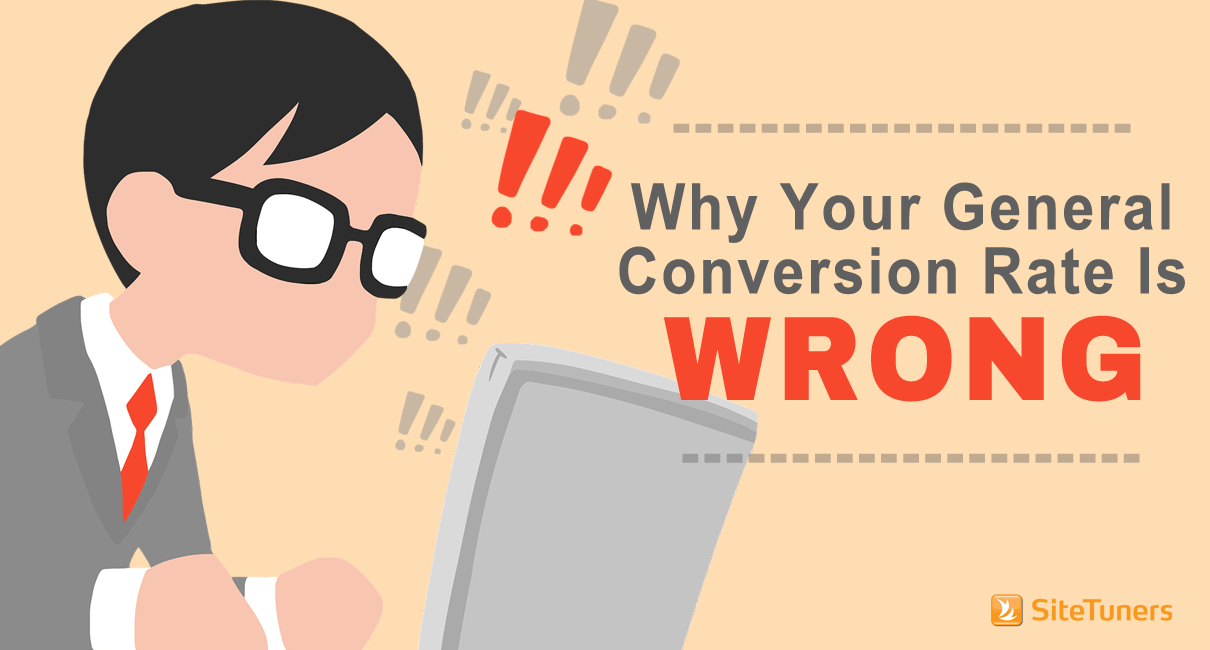
What is the site’s conversion rate?
Many marketers start with that question, because it SEEMS to be a question that asks about the business directly. The problem with the question is that there’s a hidden assumption in there. What you’re really asking is this:
What is the site’s AVERAGE conversion rate ACROSS TRAFFIC SOURCES?
Do you see the problem now? Quick, answer these questions:
- What’s the AVERAGE number of three pointers you and Stephen Curry hit this season?
- What’s the AVERAGE annual salary you and Robert Downey Jr. had these past 5 years?
- What’s the AVERAGE number of Oscars won between you and Meryl Streep?
Do any of those figures seem to be worth analyzing? Or are they useless because the data is not segmented, because you are dealing with AVERAGES that you aren’t controlling for?
The same thing is true for your web site.
- Social visits tend to be about reading an interesting article, with little commercial intent.
- Organic traffic is a mixed bag – some of it is early stage, some of it is late stage.
- Cost per click traffic should be held to a higher standard – you are paying for that traffic, and you should have a pretty good conversion rate on that channel.
The average across those channels? Not very useful.
If you ignore groupings like traffic segments, you’re missing accurate conversion rates by a mile.
If you use Google Analytics, you should start creating and using the segments below, then measuring them based on user intent. Sometimes that means sales conversions. Other times … not so much.
Social Traffic
With Google Analytics open, use this link to create a social segment.
Once you have that open, you should note that unless you specifically tailor your social media presence to be commerce-heavy, this segment is going to lean towards early-stage visitors.
This segment tends to be comprised of people who visit your blog after a colleague shared an interesting article, or visitors who review a guide you’ve made because a friend found it interesting.
The segment generally doesn’t have a ton of commercial intent.
What that means is your gold standard here shouldn’t be sales conversions. You should look at these two metrics the most:
- Volume of visitors, because if that’s high, your messages and brand reach are spreading
- Loyal/return visitors, because that means you’re getting remembered, and people are coming back (and you can convert those visitors at a later stage)
If you have a high bounce rate and low conversion rate for this segment, you’re generally fine. People can read a guide, and leave happy without clicking on anything. The point is to get them to leave happy so they can return later.
Search Engine Traffic
With Google Analytics open, use this link to create a search engine segment.
The search engine segment will be all over the place.
Some will be in the early-stage research, getting educated about a topic and generally not being in the mood to buy anything. Some will be at the late-stage, researching the specific model of a particular product, and looking for a good price-point and free shipping. Others still will fall somewhere between those two extremes.
That means you should be monitoring three things:
- Visitor volume is still important, but now you actually want the users clicking on something
- Compared to social, bounce rate importance just jumped through the roof in terms of importance
- Conversion rates should be higher than social, but lower than that of some other channels. If conversion rates for this channel are the same as social conversions, you should be very worried
You’re closer to the sale with this segment, and indeed, some subsection of this segment is heavily geared towards conversions. But there are still some channels that lean more towards late stage compared to this.
Email Traffic
With Google Analytics open, use this link to create an email segment.
With email visitors, because you’re furthering a relationship, the bounce rate should be lower, and the conversions higher.
You also shouldn’t be sending this traffic segment to the home page, you should be sending them on a path deeper into the site, to a page related to the email message – and that means the expectation is that there will be a click-through.
You should still be tracking bounce rates and conversions, but this time, the expectations are higher.
Cost-Per-Click (CPC) Traffic
With Google Analytics open, use this link to create a cost-per-click segment.
This segment is pretty much the convert-or-go-home segment, with some caveats.
First, this covers CPC for both search engines and social traffic – you should generally expect a higher conversion rate and a lower bounce rate on the search engine CPC traffic, because that has built-in intent.
Second, some marketers use social CPC to reach a broader audience – if that’s the case, fine, you may not want to use conversions as the key measure for that segment.
If you want to focus on just Google paid ads, use this link to create a Google CPC segment. For that, you’re definitely going to want conversions on the dollar as a key metric.
Don’t Use Average Conversions across Channels
Marketers who use average conversion rate across the entire site are still better off than, say, those who obsess over vanity metrics like page views. That said, they’re still looking at data that’s sub-optimal for making decisions.
Just like the average net worth between you and Warren Buffet isn’t a very useful value, the average conversion rate between your free social traffic and your paid search engine traffic isn’t a very useful figure.
When looking for areas that you need to fix, you need the traffic channel segmentation to make sense of the data.
The segment links above should help get you closer to your true conversion rates – and the areas you need to improve.
